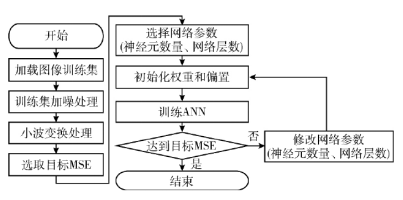Image Enhancement based on neural Network - Dr Wei Yao
2021-08-02
Because the human brain has the functions of large-scale parallel storage and processing, highly intelligent logical reasoning, self-learning and so on, people hope to apply the functions of the human brain to the computer, so that it has the ability of logical reasoning and self-learning like the human brain. Artificial intelligence is a new science that studies and develops theories, methods, technologies and application systems to simulate and extend human intelligence. Artificial intelligence technology, nanotechnology, genetic engineering and called the 21st century three cutting-edge technologies. The purpose of artificial intelligence is to enable machines to perform complex tasks that require human intelligence, such as speech recognition, natural language processing, robotics, and so on. These artificial intelligence technologies are generally realized through neural networks. Neural network can make infinite approximation to any continuous function, which is also the main reason why scholars think it plays an important role in artificial intelligence. At present, the research of artificial intelligence has been more and more in-depth, and the role of neural network is increasingly prominent.
Based on the structure of biological neural network, some basic characteristics of artificial neural network are abstracted and simulated mathematically, and used to explore the bionic model of human brain's intelligent behavior. The emergence and development of artificial neural network is closely related to computer science, artificial intelligence and neuroscience. At present, artificial neural network has made some achievements in pattern recognition, information processing, logical operation, image processing and other practical application fields. Therefore, the research on artificial neural network has gradually become a hot topic, and has been paid attention by a large number of scholars.
In order to protect the edge information of the image on the premise of maintaining the excellent denoising performance, Liu and Xu proposed an image denoising and enhancement algorithm based on neural network and dual-density and dual-tree wavelet [1]. The image edges are identified by convolutional neural networks (CNN), and the non-edge regions are de-noised, while the information of the edge regions is retained. In the process of noise reduction, dual-density dual-tree DWT is used to de-noise the noise image, and the neural network is retrained to reduce the mean square error between the noise image and the original image, so as to enhance the image.
1. Image enhancement based on artificial neural network
Artificial neural network (ANN) was used to enhance the image. The STRUCTURE of ANN consisted of input layer, hidden layer and output layer. The hidden layer consisted of 10 neurons. The denoised non-edge region and the retained edge region are the input of ANN, and ANN outputs the enhanced image. The activation function of neurons in the hidden layer is sigmoid function.
Figure 1 shows the ANN training process. The output image of wavelet denoising is used as the input of neural network, and the number of fixed neurons, weight bias and the number of hidden layers in the training process.

Figure 1 ANN training process
2. Experimental results
The test images were two 512×512 8-bit grayscale images and two 256×256 8-bit grayscale images. Lena image and Man image are 512×512, Cameraman image and Peppers image are 256×256. Additive white gaussian noise with standard deviation of {10,20,30,50,70} was used to process each image to obtain different levels of noise images.
Firstly, the visual effect of image noise reduction technology is evaluated. Man image contains high texture area and smooth area at the same time, so Man image is used as the benchmark image of visual effect. The result is shown in Figure 2, where the noise image is added with Gaussian white noise with standard deviation = 20 and mean value = 0. All the noise reduction algorithms in the figure have achieved the desired visual effect. The NeuralDWT algorithm proposed by Liu and Xu divides the noisy image into edge region and non-edge region in spatial domain. The non-edge region is de-noised by using dual-density and dual-tree wavelet transform, and the retained edge region and de-noised non-edge region are enhanced by input neural network. The algorithm achieves good noise reduction effect, and the details in high texture areas (such as the hat and hair of the figure) are slightly better than other noise reduction methods.

FIG. 2 Noise reduction results of Man image
